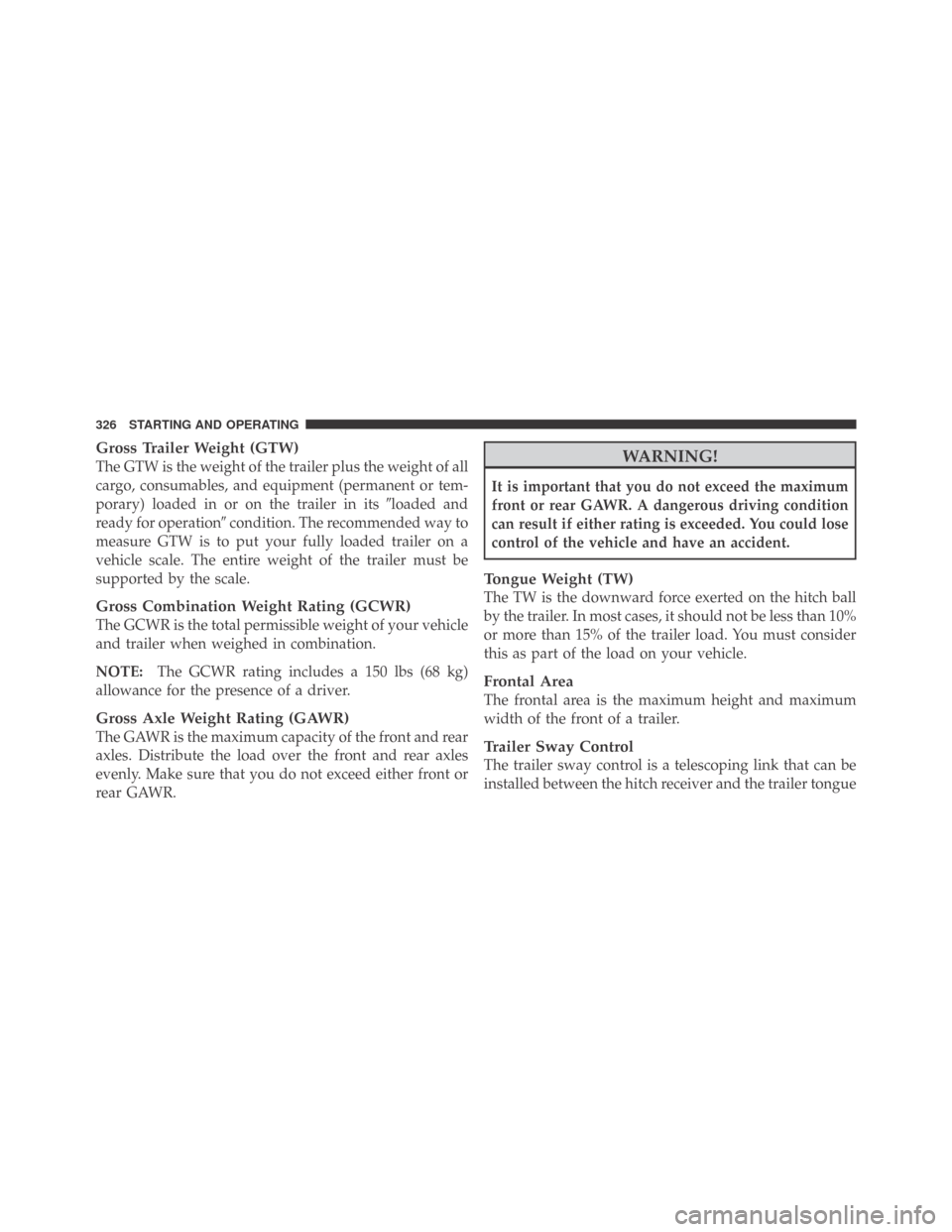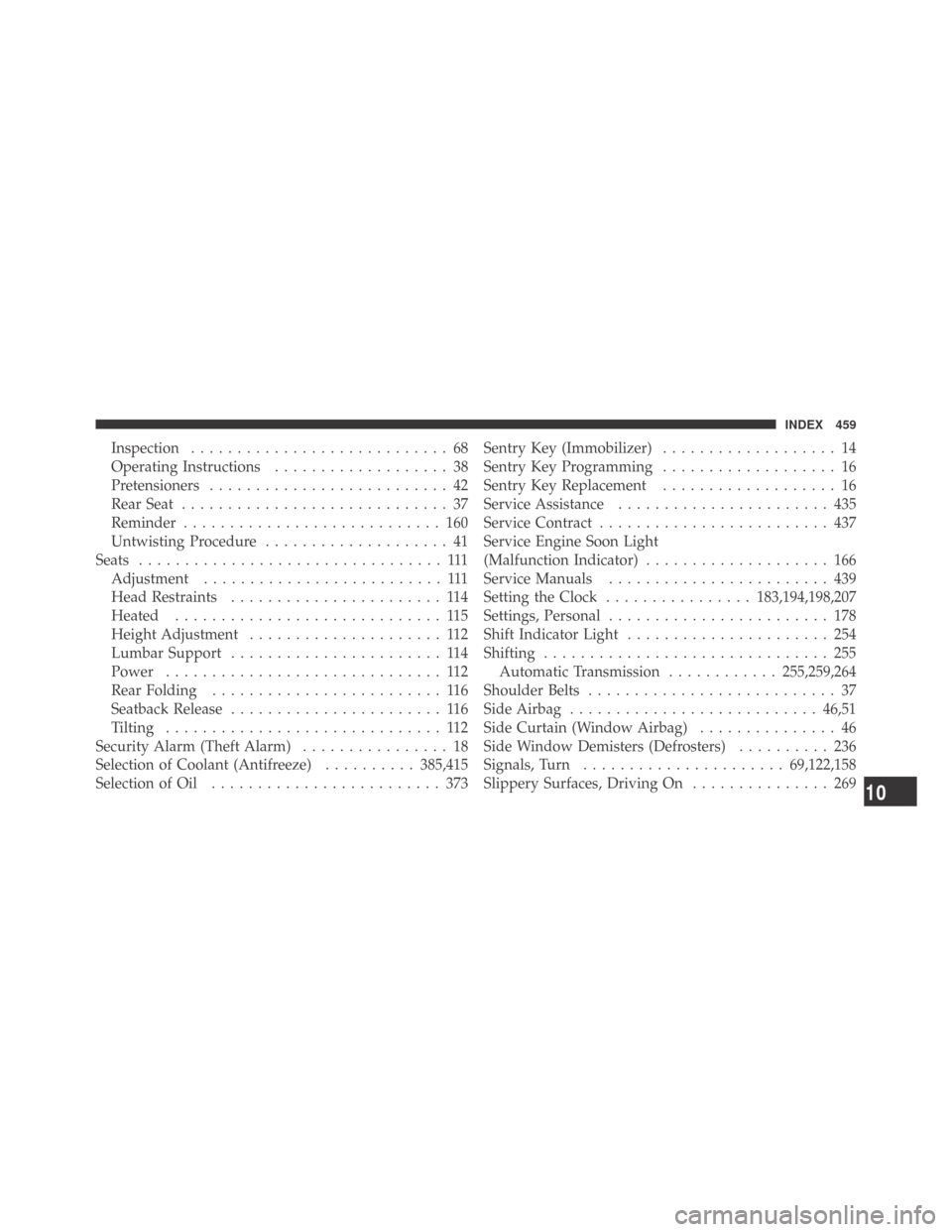Page 62 of 469

WARNING! (Continued)
•A rearward-facing child restraint should only be
used in a rear seat. A rearward-facing child re-
straint in the front seat may be struck by a deploy-
ing passenger airbag, which may cause severe or
fatal injury to the infant.
Here are some tips on getting the most out of your child
restraint:
•Before buying any restraint system, make sure that it
has a label certifying that it meets all applicable Safety
Standards. We also recommend that you make sure
that you can install the child restraint in the vehicle
where you will use it before you buy it.
•The restraint must be appropriate for your child’s
weight and height. Check the label on the restraint for
weight and height limits.
•Carefully follow the instructions that come with the
restraint. If you install the restraint improperly, it may
not work when you need it.
•Buckle the child into the seat according to the child
restraint manufacturer’s directions.
•When your child restraint is not in use, secure it in the
vehicle with the seat belt or remove it from the vehicle.
Do not leave it loose in the vehicle. In a sudden stop or
collision, it could strike the occupants or seatbacks and
cause serious personal injury.
LATCH — Child Seat Anchorage System (Lower
Anchors and Tether for CHildren)
Your vehicle’s rear seat is equipped with the child
restraint anchorage system called LATCH. The LATCH
system provides for the installation of the child restraint
without using the vehicle’s seat belts, instead securing
60 THINGS TO KNOW BEFORE STARTING YOUR VEHICLE
Page 292 of 469
Tire Sizing Chart
TIRE SIZING TERMS
Size Designation:
P= Passenger Car tire size based on U.S. design standards
�....blank....�= Passenger Car tire based on European design standards
LT= Light Truck tire based on U.S. design standards
T= Temporary spare tire
31= Overall diameter in inches (in)
215= Section width in millimeters (mm)
65= Aspect ratio in percent (%)
— Ratio of section height to section width of tire
10.5= Section width in inches (in)
R= Construction code
—�R�means radial construction
—�D�means diagonal or bias construction
15= Rim diameter in inches (in)
290 STARTING AND OPERATING
Page 328 of 469

Gross Trailer Weight (GTW)
The GTW is the weight of the trailer plus the weight of all
cargo, consumables, and equipment (permanent or tem-
porary) loaded in or on the trailer in its�loaded and
ready for operation�condition. The recommended way to
measure GTW is to put your fully loaded trailer on a
vehicle scale. The entire weight of the trailer must be
supported by the scale.
Gross Combination Weight Rating (GCWR)
The GCWR is the total permissible weight of your vehicle
and trailer when weighed in combination.
NOTE:The GCWR rating includes a 150 lbs (68 kg)
allowance for the presence of a driver.
Gross Axle Weight Rating (GAWR)
The GAWR is the maximum capacity of the front and rear
axles. Distribute the load over the front and rear axles
evenly. Make sure that you do not exceed either front or
rear GAWR.
WARNING!
It is important that you do not exceed the maximum
front or rear GAWR. A dangerous driving condition
can result if either rating is exceeded. You could lose
control of the vehicle and have an accident.
Tongue Weight (TW)
The TW is the downward force exerted on the hitch ball
by the trailer. In most cases, it should not be less than 10%
or more than 15% of the trailer load. You must consider
this as part of the load on your vehicle.
Frontal Area
The frontal area is the maximum height and maximum
width of the front of a trailer.
Trailer Sway Control
The trailer sway control is a telescoping link that can be
installed between the hitch receiver and the trailer tongue
326 STARTING AND OPERATING
Page 461 of 469

Inspection............................ 68
Operating Instructions................... 38
Pretensioners.......................... 42
Rear Seat............................. 37
Reminder............................ 160
Untwisting Procedure.................... 41
Seats................................. 111
Adjustment.......................... 111
Head Restraints....................... 114
Heated............................. 115
Height Adjustment..................... 112
Lumbar Support....................... 114
Power.............................. 112
Rear Folding......................... 116
Seatback Release....................... 116
Tilting .............................. 112
Security Alarm (Theft Alarm)................ 18
Selection of Coolant (Antifreeze)..........385,415
Selection of Oil......................... 373Sentry Key (Immobilizer)................... 14
Sentry Key Programming................... 16
Sentry Key Replacement................... 16
Service Assistance....................... 435
Service Contract......................... 437
Service Engine Soon Light
(Malfunction Indicator).................... 166
Service Manuals........................ 439
Setting the Clock................183,194,198,207
Settings, Personal........................ 178
Shift Indicator Light...................... 254
Shifting ............................... 255
Automatic Transmission............255,259,264
Shoulder Belts........................... 37
Side Airbag........................... 46,51
Side Curtain (Window Airbag)............... 46
Side Window Demisters (Defrosters).......... 236
Signals, Turn...................... 69,122,158
Slippery Surfaces, Driving On............... 269
10
INDEX 459